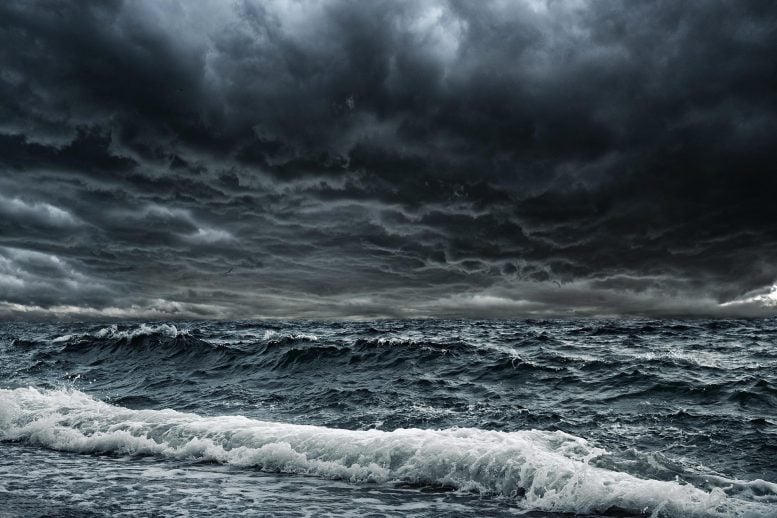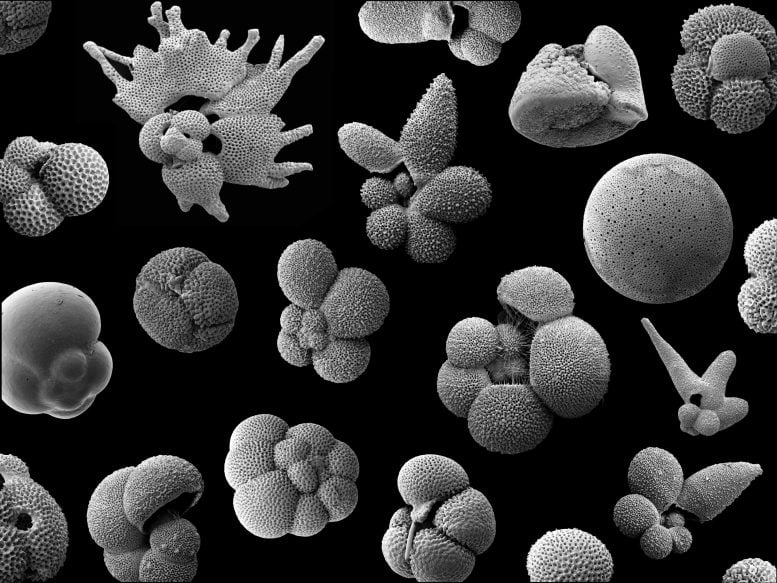
Researchers have utilized a detailed global dataset of foraminifera fossils to study shifts in marine community structures before mass extinctions, offering an early warning system for future biodiversity losses due to climate change. Led by Anshuman Swain and Adam Woodhouse, the study emphasizes the importance of monitoring ecological changes to predict future extinctions, potentially shaping the field of paleoinformatics.
A study using foraminifera fossils suggests that shifts in marine community structures can predict future extinctions, highlighting the role of historical data in forecasting climate change impacts on biodiversity.
For hundreds of millions of years, single-celled organisms known as foraminifera, which are microscopic and hard-shelled, have thrived in the oceans. These tiny creatures form the foundation of the food chain. The fossils of these ancient organisms provide insights into potential shifts in global biodiversity linked to our warming climate.
Using a high-resolution global dataset of planktonic foraminifera fossils that are among the richest biological archives available to science, researchers have found that major environmental stress events leading to mass extinctions are reliably preceded by subtle changes in how a biological community is composed, acting as a pre-extinction early warning signal.
The results are in Nature, co-led by Anshuman Swain, a Junior Fellow in the Harvard Society of Fellows, a researcher in the Department of Organismic and Evolutionary Biology, and an affiliate of the Museum of Comparative Zoology. A physicist by training who applies networks to biological and paleontological data, Swain teamed with co-first author Adam Woodhouse at the University of Bristol to probe the global, community structure of ancient marine plankton that could serve as an early warning system for future extinction of ocean life.
“Can we leverage the past to understand what might happen in the future, in the context of global change?” said Swain, who previously co-authored a study about the formation of polar ice caps driving changes in marine plankton communities over the last 15 million years. “Our work offers new insight into how biodiversity responds spatially to global changes in climate, especially during intervals of global warmth, which are relevant to future warming projections.”
Leveraging Historical Data for Future Predictions
The researchers used the Triton database, developed by Woodhouse, to ascertain how the composition of foraminifera communities changed over millions of years – orders of magnitude longer time spans than are typically studied at this scale. They focused on the Early Eocene Climatic Optimum, the last major period of sustained high global temperatures since the dinosaurs, analogous to worst-case global warming scenarios.
They found that, before an extinction pulse of 34 million years ago, marine communities became highly specialized everywhere but southern high latitudes, implying that these micro-plankton migrated en masse to higher latitudes and away from the tropics. This finding indicates that community-scale changes like the ones seen in these migration patterns are evident in fossil records long before actual extinctions and losses in biodiversity occur.
The researchers thus think it’s important to place emphasis on monitoring the structure of biological communities to predict future extinctions.
According to Swain, the results from the foraminifera studies open avenues of inquiry into other organismal groups, including other marine life, sharks, and insects. Such studies may spark a revolution in an emerging field called paleoinformatics, or use large spatiotemporally resolved databases of fossil records to glean new insights into the future of Earth.
Reference: “Biogeographic response of marine plankton to Cenozoic environmental changes” by Anshuman Swain, Adam Woodhouse, William F. Fagan, Andrew J. Fraass and Christopher M. Lowery, 17 April 2024, Nature.
DOI: 10.1038/s41586-024-07337-9
The researchers’ study was made possible by a longstanding National Science Foundation field study aboard the JOIDES Resolution research vessel, which over the last 55 years has conducted ocean drilling around the world. The project is set to expire this year.










Again with the extreme climate change of course driven by industry and ICE vehicles.
No evidence that burning of fossils fuels effects the climate anymore than a miniscule percentage most of it is naturally occurring through a combination of Geothermal and Solar activity.
Still waiting for anyone to explain to me how the waters of the Aegean Sea have risen 60 feet in the past decade far exceeding the rise in water levels anywhere else around the planet.
If you do not believe what I just said then review articles about ancients ruins on island of Delos sinking into Aegean Sea.
Yet the all wise Climate Czar John Kerry continues to travel on a fuel guzzling luxury Yacht or personal jet.
Exactly! If one isolated place sink or arise is due the natural tectonic plate movement! The level sea is an worldwide measurement, not locally!
The interpretation of these data would have one fewer biasing factor if any mention of climate change were eliminated. The frequent inclusion of the term “climate change” is in itself a biasing factor, reducing the veracity of the entire study. The data sets are able to be interpreted without the injection of a major biasing factor into the wording of the study. LET THE DATA SPEAK FOR ITSELF FIRST, then do your interpretations.
C.W. Ingersoll is right!
Perfectly!
I totally agree!
That’s ridiculous. Climate change is a constant. You cannot study this subject without looking at Climate change. You are a biased person. Climate change cannot be considered biased. It is historical fact. There’s no lava outside my house. It’s June in the northern hemisphere and there’s no glacier outside my house.
You have to make yourself unbiased before studying any anchient history. The ice age has ended and that is a fact. The dinosaurs required more oxygen and more heat to grow larger and that is a fact. The climate has always been changing and that is a fact.
Crap science
Specify How it is crap. Generic remark only show your limited knowledge or lack of.
On an ocean that occupies 72% of the planet’s surface and neither if the human want cause a changing they won’t be able to do that. On the other hand, the infinite amount of data allow any type of analysis converging to desired results, if you can understand me!
There’s an error in the opening sentence. “…shifts in marine community structures can predict…” should be “can be used to predict.” Only human intelligence can make a prediction.
This planet is severely overdue for a mass extinction. It’s coming and there’s no preventing it. Unfortunately, humans and the burning of fossil fuels, and extreme farming (releasing carbonmonoxide and methane gases) are speeding up the process of climate change. Yes, climate changes will ALWAYS occur naturally, but the plague that is mankind’s greed has greatly accelerated the rise in temperatures/ climates. Oil spills into the ocean, trash in the ocean and buried in the ground, burning fossil fuels, and deforestation for farm land, and then farm land into million dollar homes.. Humans have and will continue to destroy this planet until the planet envidentably destroys mankind. That plankton in the ocean is what’s responsible for oxygenating the Earth enough for trees and plants to grow, those plants suck up the CO2 in the air.. what’s gonna happen when the trees and plants are gone? What’s gonna happen when we kill the oceans and/or warm the oceans enough to KILL that plankton that oxygenates the planet? Answer: EVERYTHING DIES!!! You anti-climate changers really need to leave your fantasy world behind and come to terms with the fact that if changes aren’t made NOW, this planet is DOOMED! Science is proven facts and those facts can be reproduced and proven, and it amazes me that in 2024 we still have idiots that don’t believe in global warming (excessive climate change), that the Earth is round and NOT FLAT, that dinosaurs DID exist, that burning fossil fuels and over farming are killing the ONLY planet we have to live on, and that we are headed for another global extinction!! Get it together and step your mind up, your ridiculous beliefs are destroying more than just you and your families.
People, it’s simple mathematics, the world, life is cyclical,
Past present & future, so we’ve been through this before. What earth age are we in?
Let’s move on, forward, using a little common sense is beneficial.
I think all the booms blowing up in the war it’s working like a Jake hammer 1000s of booms just keep hammer the ground and that is a big part of why the world 🌎 is changing and it’s destroying it’s self but not exactly Russian booms are destroying the who world they need to stop now to save us all my thoughts thank you
Yet still, God is in control!!!